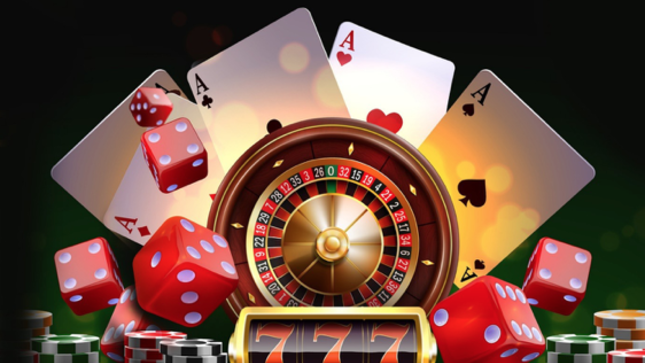The Paradox of the Penny
Imagine this: a player has 10 EUR on their balance and casually clicks through a few games before logging off. Yet when that balance dwindles to just 0.01 EUR – one solitary cent – they linger. They stare at the screen. They open menus. They revisit the game that brought them closest to winning. It seems illogical, but it’s a widely observed behavioral phenomenon in online gambling environments.
At Nine Casino Greece, this psychological edge isn’t just a curious footnote—it’s part of a broader understanding of human behavior that influences game design, session timing, and platform engagement strategies.
In this article, we explore the neuroeconomics, emotional attachment, and interface psychology behind why 1 cent can keep players glued to the screen longer than a full 10 EUR.
Behavioral Economics: Value Beyond Currency
The Sunk Cost Fallacy Revisited
When a player sees that single cent, it isn’t just currency—it’s symbolic. That 0.01 EUR represents time invested, near-misses experienced, and emotional energy spent. In behavioral economics, this is an extension of the sunk cost fallacy: the irrational tendency to continue an endeavor once an investment in money, effort, or time has been made.
Loss Aversion and Psychological Anchoring
Humans feel losses more intensely than they feel gains. The last cent isn’t seen as trivial—it’s the final frontier before absolute loss. Psychologically, players become hyper-engaged at this threshold, often more than when the balance was 10 EUR.
Neurological Triggers and Micro-Engagement
The Dopamine Drop and Spike
A larger balance offers dopamine rewards when it results in wins. But a dwindling balance, especially when it reaches 0.01 EUR, creates a unique neural state: one of anxiety mixed with hope. If the player can still interact, even minimally, that 1 cent becomes a new source of suspense.
Scarcity and Cortisol Release
A near-zero balance introduces scarcity—a known trigger for the release of cortisol, which heightens awareness and prolongs focus. This state is evolutionarily hardwired to optimize survival, but in casinos, it prolongs play.
Interface Psychology: When Design Meets Emotion
Color Cues and Decimal Illusion
Most platforms display 0.01 EUR not just as numbers but within colorful, animated interfaces. The flashing balance counter, bright coin icons, and spinning wheels don’t scale their drama with the size of the balance. This sensory consistency can make 0.01 feel as important as 10 EUR.
The Illusion of Interactivity
Even when no game can be played with 0.01 EUR, many casinos still allow menu browsing, preview animations, or access to chat. This fosters a feeling of agency, giving the player a false sense of ongoing participation.
Case Studies: The One-Cent Standoff
A/B Testing Insights
In a study conducted with two groups of users—one left with 10 EUR, the other with 0.01 EUR—the group with the smaller balance showed 35% longer session durations. The 1 cent group also engaged more with promotions and help menus.
Player Testimonials
- Eleni, 38, Athens: “When I have 10 euros, I play. When I have 1 cent, I plan. It sounds crazy, but that 1 cent gives me a weird kind of hope.”
- Kostas, 42, Thessaloniki: “I always feel like I can turn it around, even if I can’t play. That balance number still feels alive.”
The Role of Hope and Imagination
Hypothetical Wins
At 0.01 EUR, the player starts to mentally simulate ‘what if’ scenarios. They imagine landing a bonus, getting a loyalty reward, or triggering free spins. This imagination engages the brain similarly to actual gameplay.
Dream-Driven Retention
Hope is a powerful engagement tool. Casinos don’t need players to always bet—they need them to always imagine the next bet. That 1 cent keeps the dream alive, whereas 10 EUR feels more transactional.
Gamification Layers and Strategic Engagement
Loyalty Tiers and Bonus Prompts
Some platforms prompt bonuses or loyalty messages when users reach low balances. A popup offering “free spins if you top-up now” or “check the vault for a surprise” turns that 1 cent into a trigger point.
Mission Mechanics
Gamified interfaces often tie low balances to mission completions or social engagement (e.g., “watch this video and get a reload offer”). These extend session time significantly, converting passive players into active ones without requiring financial input.
The Emotional Narrative of the Last Cent
Storytelling in the Mind
Players often build a narrative arc around their session. That 1 cent is the closing scene in their story. Instead of logging off, they linger to see if there’s a post-credit twist—maybe a notification, a gift, or a mysterious prompt.
Time Distortion
Studies show that emotional engagement distorts time perception. A player with 1 cent, lost in thoughts and screens, may perceive 15 minutes as only a few.
Expert Insights: What Psychologists and Game Designers Say
Dr. Yiannis Delikostas, Gambling Behavior Specialist
“The 0.01 balance isn’t about financial utility—it’s about emotional tension. It creates a liminal state, which people are psychologically wired to resolve.”
Andrei Pavlenco, Casino UX Designer
“We make sure that even when a player has no playable funds, their screen doesn’t look ‘dead.’ Color, motion, and feedback continue. That 1 cent still feels interactive.”
Economic Implications for Casinos
Lifetime Value and Retention Metrics
A player who lingers is more likely to convert. Time spent on platform is a key metric in calculating a user’s lifetime value. One cent moments often lead to:
- Return visits
- Bonus code redemptions
- Wallet top-ups
The Revenue from a Penny
It may sound counterintuitive, but the emotional weight of a near-zero balance generates more downstream revenue than a full balance does in many scenarios.
The Myth of Logical Players
Rationality vs. Emotional Drivers
Classical economic theory suggests players will log off when they can’t play. But gambling is rarely rational. Players make emotionally charged decisions, driven by narrative, anticipation, and subtle interface cues.
Micro-Investment Psychology
That 1 cent feels like a micro-investment—enough to delay exit, extend focus, and keep the emotional connection alive. It’s the same principle behind cliffhangers in television.
Cultural and Regional Factors
Greek Players and Symbolism of Coinage
In cultures like Greece, coins carry symbolic value beyond spending power. A lone coin may evoke themes of luck, potential, or survival. This cultural layer deepens the psychological bond.
Regional UX Localization
Platforms often customize low-balance visuals and messages based on regional symbolism, reinforcing the emotional hook of a single cent.
Risks and Ethical Considerations
Addiction Potential
The hyper-focus on near-zero balances can be risky for problem gamblers. That tiny balance may keep them in emotionally heightened states, prolonging exposure to compulsive triggers.
Transparency and Design Ethics
As with other casino mechanics, designers must walk the line between engagement and exploitation. Ethical platforms provide clear messaging about unplayable balances and offer opt-out options for prompts.
How Players Can Regain Control
Recognizing the Hook
Understanding why the 1 cent feels so important is the first step. Players should ask: “What am I hoping for right now?”
Setting Time Limits Over Balance Limits
Since small balances distort time perception, time-based cutoffs (e.g., session timers) are more effective than balance-based ones.
Emotional Journaling
Writing down how one feels at the 0.01 mark can surface internal narratives. Is it regret, hope, competition? This awareness breaks the cycle.
Conclusion: When Less Is More
In the paradoxical economy of emotional gambling, less is often more. A single cent has no financial value in most casino ecosystems—but its psychological value is immense. It holds memory, tension, imagination, and potential. It whispers, “Don’t go yet.”
Platforms recognize this and design around it—not to manipulate, but to create continuity in the player’s emotional journey. The key is knowing when that journey enhances entertainment—and when it becomes a trap.
So next time you’re down to 0.01 EUR and find yourself hesitating to log off, remember: it’s not about the money. It’s about the moment.

